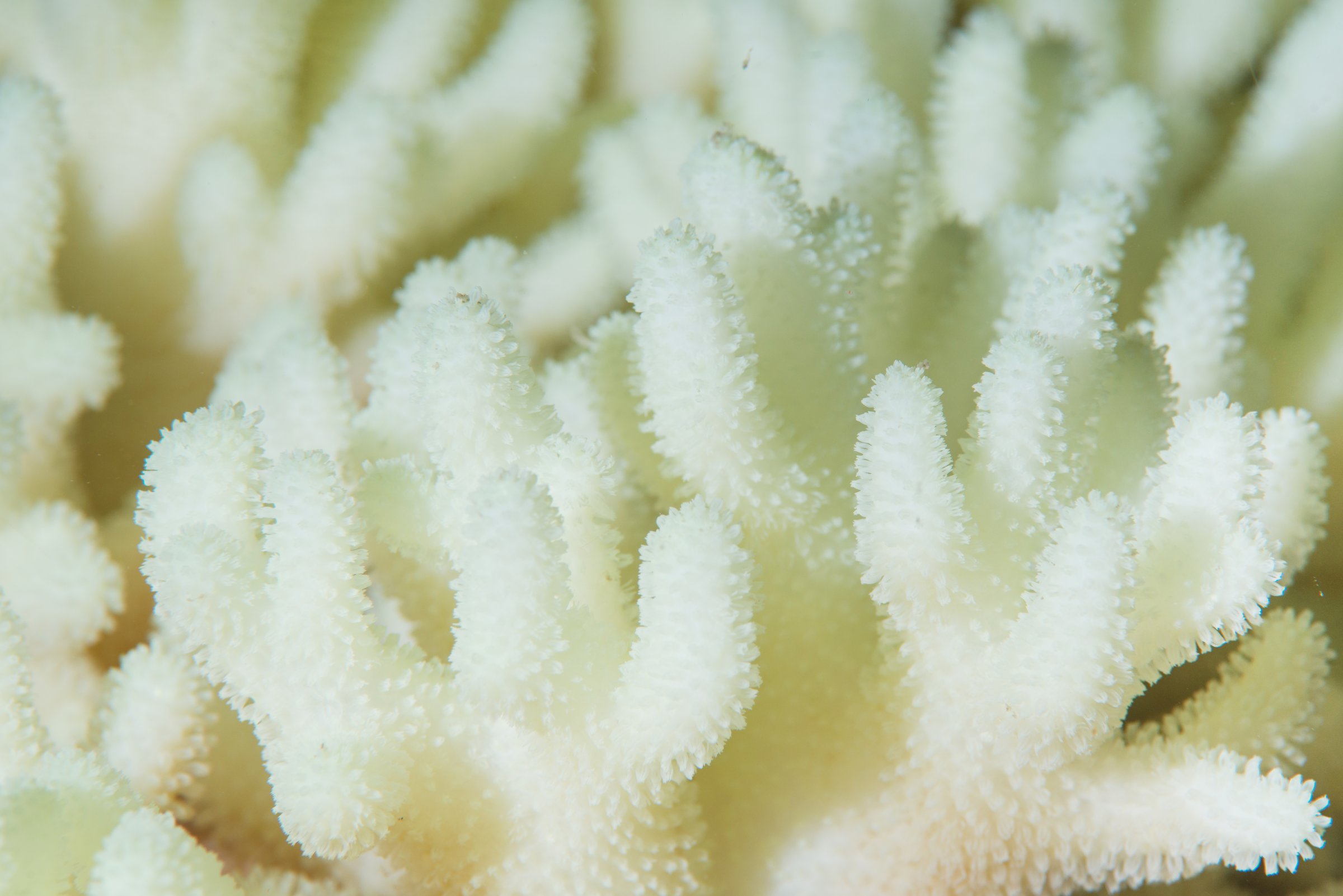
The powerful gene-editing tool CRISPR-Cas9 is taking the scientific world by storm. It gives researchers unprecedented power and precision in making tweaks to practically any gene in a plant or animal — and coral reefs could become its next beneficiary.
In a paper published in the Proceedings of the National Academy of Sciences, researchers led by Phillip Cleves at Stanford University used CRISPR to edit three genes in corals growing in Australia’s Great Barrier Reef. Cleves manipulated the genes very early in the coral’s life cycle — just after fertilization of egg and sperm, when the coral is just one cell. That ensured that the genetic change was as widespread in the resulting coral’s genome as possible. Two of the genes were responsible for the reef’s coloring — coding for red and green fluorescent proteins — and one was involved in regulating how new coral settles and grows in a reef.
MORE: First CRISPR Human Trial Approved in the U.S.
Cleves and his team disrupted the genes using CRISPR and demonstrated that the resulting embryos contained the mutated genes. Making the edits wasn’t easy, however, since coral only spawn once or twice a year during a very limited window. Cleves collaborated with Great Barrier Reef coral experts at the Australian Institute of Marine Science to perfectly time the spawning, which is synchronized to the full moon. They wanted to use CRISPR in coral embryos since more of the coral’s cells would show the effect of the genetic edits as it grew.
The results suggest that CRISPR could be used to learn more about what specific coral genes do, and eventually, to help scientists manipulate them so they might become more resilient to bleaching caused by environmental stresses like global warming and pollution. For now, Cleves says the technology won’t be used to genetically engineer bleach-proof coral, but to build a much-needed database on coral genes and their functions to better understand coral biology. By disrupting specific genes and studying which coral functions are compromised as a result of the CRISPR intervention, scientists can learn more about the coral’s life cycle. They could find, for example, that there are some genes that help coral to withstand the warmer temperatures associated with climate change. “It would be nice to know if there were genes to make corals more or less susceptible to global warming,” says Cleves. “It could be that there are natural populations of coral that are more likely to survive and could help focus conservation efforts.”
Such work could also help scientists apply CRISPR to existing coral, not just coral embryos, to cause genetic change. “Even if we don’t know how to do that now, it’s not unreasonable to think we can do that in the future,” says Cleves. “We’re hitting a renaissance in what we are starting to learn about the genetic basis of coral biology. We hope this paper serves as a humble blueprint for the types of studies people can do. Because despite the havoc we have seen on the coral reefs due to climate change, we are still in the pretty early days of understanding the genetic basis of that.”
More Must-Reads from TIME
- Why Trump’s Message Worked on Latino Men
- What Trump’s Win Could Mean for Housing
- The 100 Must-Read Books of 2024
- Sleep Doctors Share the 1 Tip That’s Changed Their Lives
- Column: Let’s Bring Back Romance
- What It’s Like to Have Long COVID As a Kid
- FX’s Say Nothing Is the Must-Watch Political Thriller of 2024
- Merle Bombardieri Is Helping People Make the Baby Decision
Contact us at letters@time.com